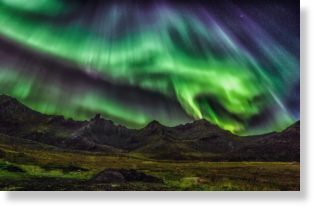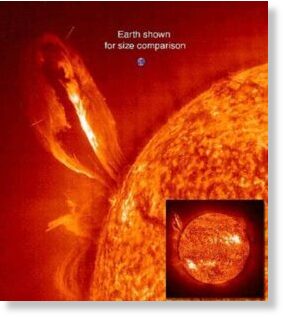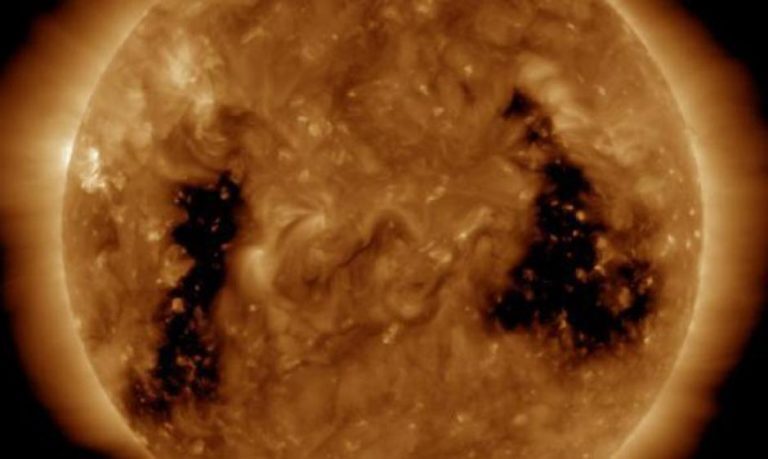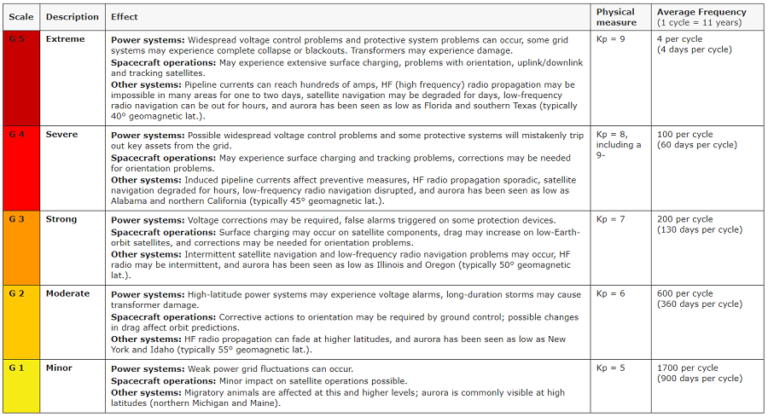In the latest update from the SWPC, they say the area of impact will primarily be poleward of 60 degrees Geomagnetic Latitude. In this region, weak power grid fluctuations can occur on Earth. In space, minor impact on satellite operations are possible. Elsewhere, Mother Nature may light up the skies more south than usual; aurora could be visible at high latitudes across the northern tier of the United States, such as northern Michigan and Maine.
"Enhanced conditions are expected late on January 15 as a recurrent, negative-polarity coronal hole high speed stream (CH HSS) becomes geoeffective," said the SWPC in their latest Forecast Discussion.
Coronal holes can develop at any time and location on the Sun, but are more common and persistent during the years around solar minimum. Coronal holes are most prevalent and stable at the solar north and south poles; but these polar holes can grow and expand to lower solar latitudes. It is also possible for coronal holes to develop in isolation from the polar holes; or for an extension of a polar hole to split off and become an isolated structure. Persistent coronal holes are long-lasting sources for high speed solar wind streams, also known as "CS HSS". As the high speed stream interacts with the relatively slower ambient solar wind, a compression region forms, known as a co-rotating interaction region (CIR). According to the SWPC, from the perspective of a fixed observer in interplanetary space, the CIR will be seen to lead the CH HSS.
Strong CIRs and the faster CH HSS can impact Earth's magnetosphere enough to cause periods of geomagnetic storming to the G1-G2 (Minor to Moderate) levels; although rarer cases of stronger storming may also occur.

- Solar wind speed increases
- Temperature increases
- Particle density decreases
- Interplanetary magnetic field (IMF) strength increases
While these solar events can help illuminate the sky with stunning aurora, they can also do considerable harm to electronics, electrical grids, and satellite and radio communications.

A June 2013 study by Lloyd's of London and Atmospheric and Environmental Research (AER) in the U.S. showed that if the Carrington event happened in modern times, damages in the U.S. could exceed $2.6 trillion, roughly 15% of the nation's annual GDP.
While typically known for their weather forecasts, the National Oceanic and Atmospheric Administration (NOAA) and its National Weather Service (NWS) is also responsible for "space weather." While there are private companies and other agencies that monitor and forecast space weather, the official source for alerts and warnings of the space environment is the Space Weather Prediction Center (SWPC). The SWPC is located in Boulder, Colorado and is a service center of the NWS, which is part of NOAA. The Space Weather Prediction Center is also one of nine National Centers for Environmental Prediction (NCEP) as they monitor current space weather activity 24/7, 365 days a year.





Reader Comments
to our Newsletter